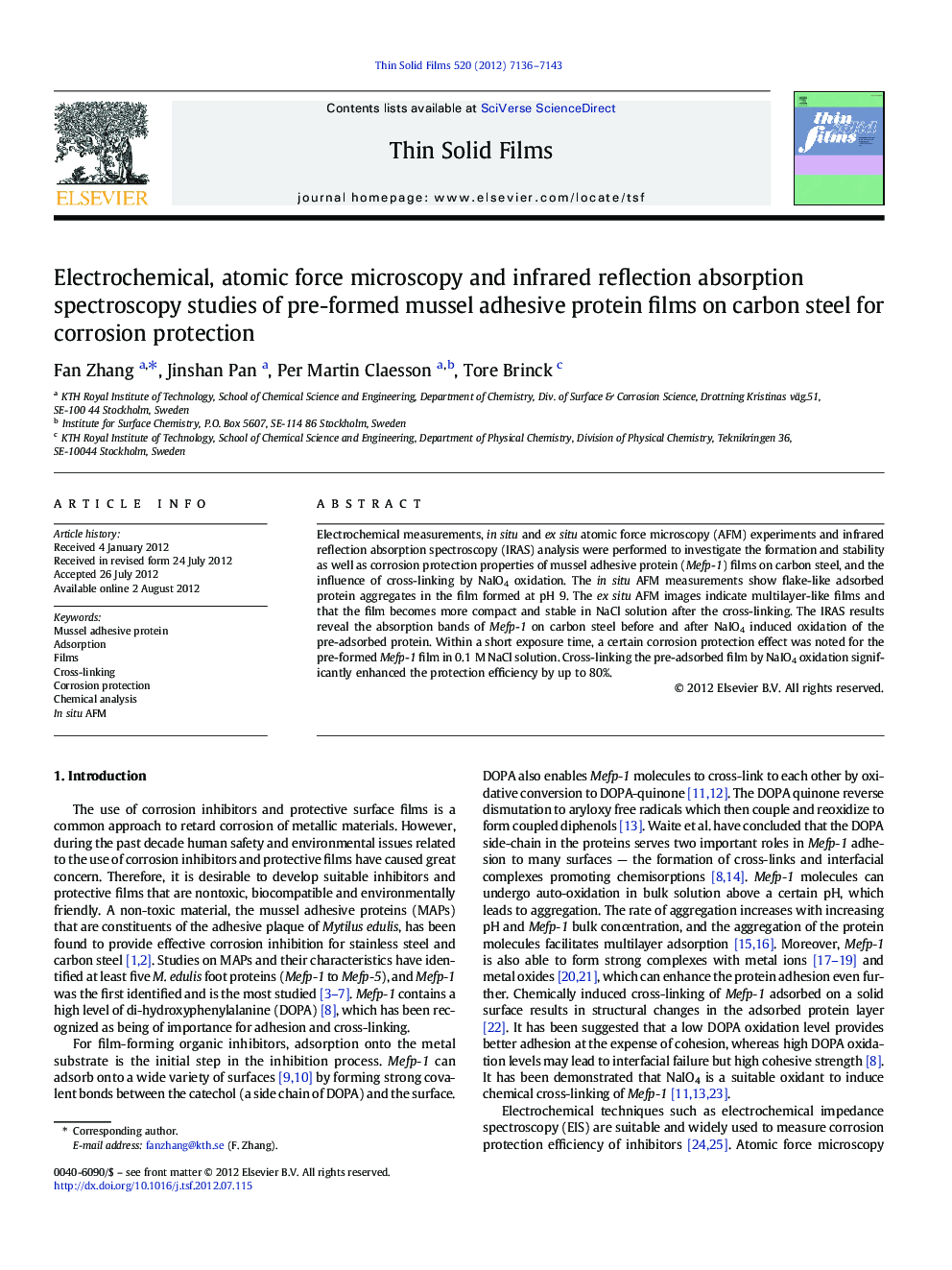| Article ID | Journal | Published Year | Pages | File Type |
|---|---|---|---|---|
| 1666740 | Thin Solid Films | 2012 | 8 Pages |
Electrochemical measurements, in situ and ex situ atomic force microscopy (AFM) experiments and infrared reflection absorption spectroscopy (IRAS) analysis were performed to investigate the formation and stability as well as corrosion protection properties of mussel adhesive protein (Mefp-1) films on carbon steel, and the influence of cross-linking by NaIO4 oxidation. The in situ AFM measurements show flake-like adsorbed protein aggregates in the film formed at pH 9. The ex situ AFM images indicate multilayer-like films and that the film becomes more compact and stable in NaCl solution after the cross-linking. The IRAS results reveal the absorption bands of Mefp-1 on carbon steel before and after NaIO4 induced oxidation of the pre-adsorbed protein. Within a short exposure time, a certain corrosion protection effect was noted for the pre-formed Mefp-1 film in 0.1 M NaCl solution. Cross-linking the pre-adsorbed film by NaIO4 oxidation significantly enhanced the protection efficiency by up to 80%.
► Mussel protein was tested as “green” corrosion protection strategy for steel. ► At pH 9, the protein adsorbs on carbon steel and forms a multilayer-like film. ► NaIO4 leads to structural changes and cross-linking of the protein film. ► Cross-linking results in a dense and compact film with increased stability. ► Cross-linking of preformed film significantly enhances the corrosion protection.
